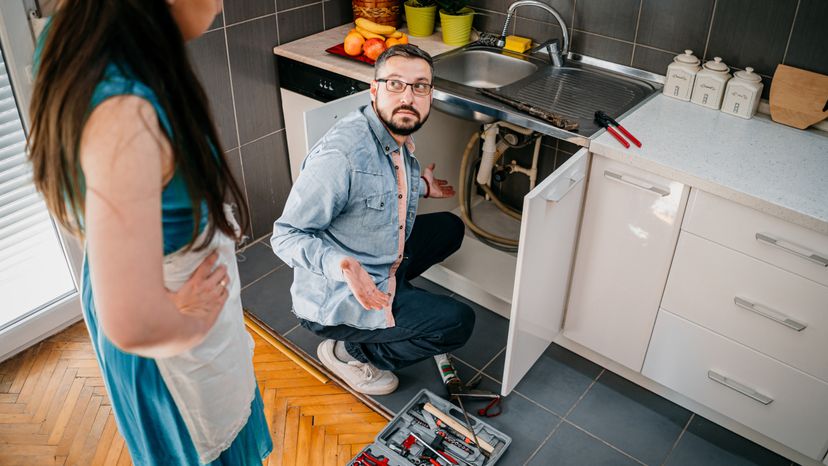
All sorts of things can find their way down your drain, and end up clogging your sink. You can unclog your sink by plunging it, snaking it or flushing it with a cleanser.
Here's how to unclog your sink by plunging it:
Advertisement
- Fill the sink up partially with water.
- Work the plunger up and down vigorously several times.
- Quickly pull the plunger off the drain opening.
You'll need to plug one drain of a double-bowl kitchen sink, so the pressure will concentrate where the clog is. You can stuff a wet rag in the drain you're not plunging [source: Henkenius].
If plunging doesn't work, you'll need to snake out the drain.
- Remove the sink trap. This may require a pipe wrench.
- Empty any water from the trap into a bucket.
- Check the trap for clogs. Unclog it if necessary.
- Remove the arm of the sink trap that protrudes from the stubout (i.e. the extension of the pipe that goes into the wall).
- Feed a plumber's snake (cable auger) into the stubout until you can feel some resistance.
- Pull out about 18 inches (46 centimeters) of cable and tighten the lock screw on the snake.
- Crank the snake handle clockwise while pushing forward until you push the blockage free.
- If the snake gets stuck, crank it counter-clockwise while pulling back. Once it's freed, you can continue snaking out the drain.
- Replace the sink trap arm and the trap, once the blockage is cleared.
- Turn on the hot water and check if it drains. If it doesn't, partially fill the sink with hot water and clear any debris by using a plunger.
- Run the hot water again to check the drainage.
If you don't have a snake you can try to push the clog out with a wire, such as a straightened-out wire hanger.
Commercial sink-unclogging products containing lye are not recommended because they're hazardous (you won't be able to work on a pipe full of lye) and can corrode your pipes. Instead, you can try pouring baking soda down the drain, followed by vinegar or peroxide. Let this sit for half an hour before rinsing. Even dish soap preceded and followed by boiling water may do the trick [source: Cooper].
If all else fails, call a plumber!
Advertisement